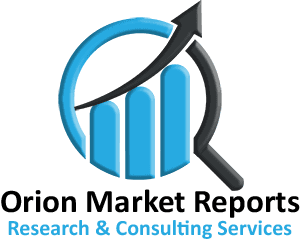Drug Induced Immune Hemolytic Anemia Market Global Trends, Market Share, Industry Size, Growth, Opportunities and Market Forecast – 2022 to 2028
The Drug Induced Immune Hemolytic Anemia Market is poised to value at a CAGR of over 8% during the forecast period 2022 to 2028.
Drug-induced immune hemolytic anemia (DIIHA) is rare and often requires a specialized laboratory to provide optimal serological tests to confirm the diagnosis. Hypotheses about the mechanisms thought to be related to the most common drugs associated with DIIHA have changed over the past few decades. Currently, the drugs most frequently associated with DIIHA are cefotetan, ceftriaxone, and piperacillin. DIIHA is most commonly due to drug-dependent antibodies (such as cephalosporin antibodies) that can only be detected in the presence of the drug. DIIHA may also be associated with drug-independent antibodies. These antibodies do not require the presence of a drug (such as fludarabine) to obtain an in vitro response. In the latter case, the drug affects the immune system, producing red blood cell (RBC) autoantibodies. Clinical and laboratory findings are the same as for autoimmune hemolytic anemia (AIHA), except for remission associated with drug discontinuation. Some of the mechanisms involved in DIIHA are controversial.
Market Segments
By Drug Type
• Cephalosporins
• Quinidine
• Levodopa
• Methyldopa
• Penicillin and its derivatives
• Methyldopa
• Nitrofurantoin
• Phenazopyridine (pyridium)
• Nonsteroidal anti-inflammatory drugs (NSAIDs)
• Levofloxacin
• Dapsone
Key Players
• ARUP Laboratories
• Cyprotex
• Creative Biolabs
• Machaon Diagnostics
• F. Hoffmann-La Roche Ltd.
• Baxter International Inc.
• Pfizer Inc.
• Zydus Cadila
• Amneal Pharmaceuticals Inc.
• Incyte Corp.
Scope of the Report
The research study analyzes the global Drug Induced Immune Hemolytic Anemia industry from 360-degree analysis of the market thoroughly delivering insights into the market for better business decisions, considering multiple aspects some of which are listed below as:
Recent Developments
o Market Overview and growth analysis
o Import and Export Overview
o Volume Analysis
o Current Market Trends and Future Outlook
o Market Opportunistic and Attractive Investment Segment
Geographic Coverage
o North America Market Size and/or Volume
o Latin America Market Size and/or Volume
o Europe Market Size and/or Volume
o Asia-Pacific Market Size and/or Volume
o Rest of the world Market Size and/or Volume
Key Questions Answered by Drug Induced Immune Hemolytic Anemia Market Report
1. What was the Drug Induced Immune Hemolytic Anemia Market size in 2020 and 2021; what are the estimated growth trends and market forecast (2022-2028).
2. What will be the CAGR of Drug Induced Immune Hemolytic Anemia Market during the forecast period (2022-2028)?
3. Which segments (product type/applications/end-user) were most attractive for investments in 2022? How these segments are expected to grow during the forecast period (2022-2028).
4. Which manufacturer/vendor/players in the Drug Induced Immune Hemolytic Anemia Market was the market leader in 2020?
5. Overview on the existing product portfolio, products in the pipeline, and strategic initiatives taken by key vendors in the market.
The report will be delivered within 48-72 hours after payment confirmation
